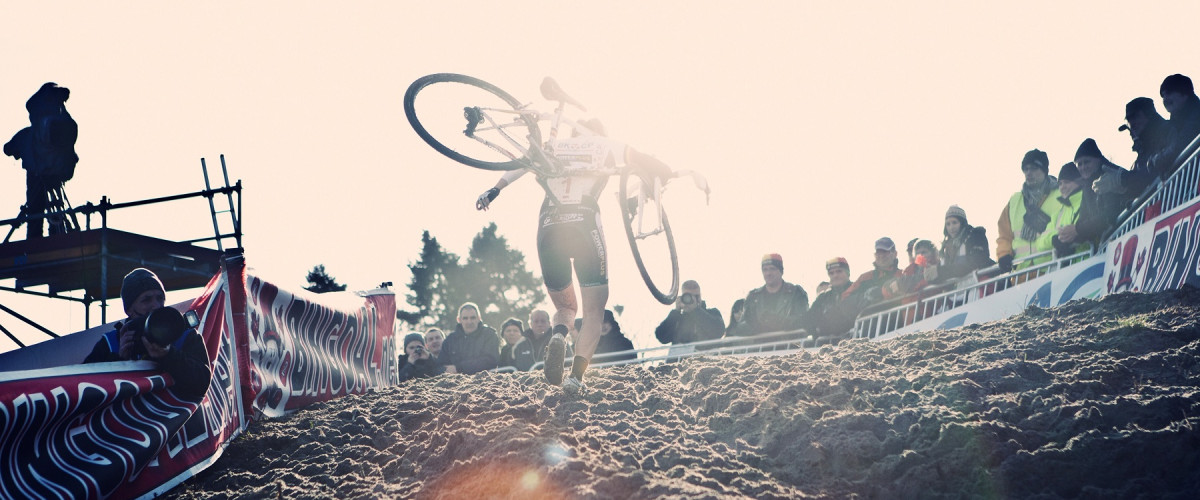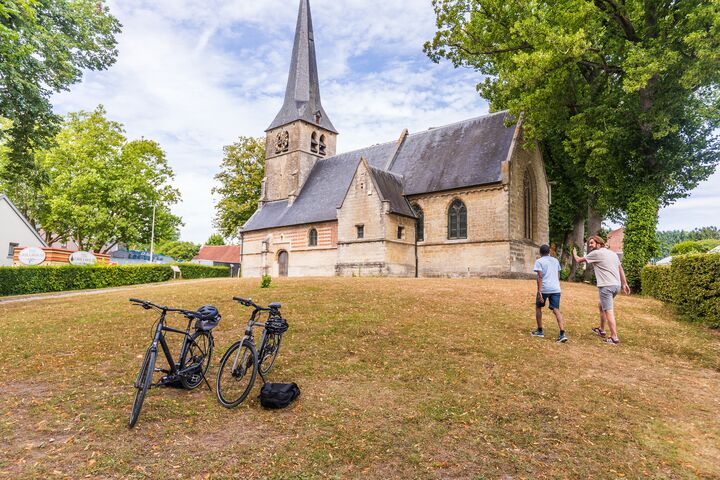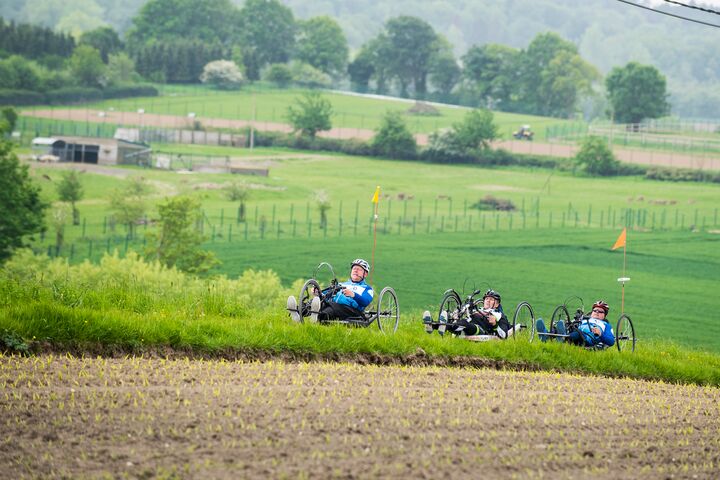
Mud, sweat and gears: the Flemish love for cyclo-cross
Cyclo-cross is the bastard son of classic cycling. During the October-to-February season, riders splatter through the trails of Flanders, pausing only to dismount and carry their bikes on their shoulders when the hills become too steep or the mud too heavy. Mud is part of the cyclo-cross experience as much as wheels are part of the bike.
A long, hard slog
Often seen as a way for road riders to keep fit in the off season, cyclo-cross is a winter-only sport in which racers repeatedly lap a compact, tight, off-road circuit built around sharp turns, steep slopes, streams, fallen trees and man-made obstacles like bales of straw and even flights of stairs.
Although it is an emerging sport, cyclo-cross’ roots are nearly as old as the bicycle itself, when enthusiasts for new machines would test their ruggedness in the roughest of environments. The key early figure was turn-of-the century French soldier – and later secretary-general of the French Cycling Union – Daniel Gousseau, who would cycle through the forests alongside his horse-mounted general.
Gousseau enjoyed these outings so much that he invited a few of his friends along, and, before long, impromptu races occurred. In 1902, he organised the first French championship.
Flemish riders began imposing themselves in the 1960s: Eeklo-born Eric De Vlaeminck first won the World Championships at the tender age of 21 in 1966 and then each year from 1968 to 1973. Now Flanders looms over the sport. Twelve of the 21 UCI Cyclo-cross World Cup winners have been from the region – and that doesn’t include those who have moved here, like Czech rider Zdeněk Štybar.
Riders in Flanders have also accounted for two-thirds of all the podium places in the two-day UCI Cyclo-cross World Championships.
Sven Nys (pictured above) – known as the Cannibal from Baal or the General – is arguably the greatest cyclo-cross rider ever. He still starts virtually every cyclo-cross race as the favourite, even at the age of 38. In the UCI Cyclo-cross Cup, Nys towers above his rivals, with six titles to his name, even if his last one was in 2009.
Perfect spectator sport
Despite cyclo-cross being called a fringe sport, some of cycling’s greatest heroes, including numerous Tour de France winners, have used it for winter conditioning. There is little cross-cutting between cyclo-cross and traditional road racing, or mountain bikes, where the rider must be self-sufficient and carry out in-race repair work himself.
By contrast, a cyclo-cross racer is allowed to use up to three bicycles in a race, which can be vital when a clean bike can weigh 10 kilograms less than a muddy one. This has resulted in a highly organised pit-stop system with teams of mechanics working throughout the race to ensure the rider can have a clean, oiled bike once each lap.
Cyclo-cross races are generally held on circuits two to four kilometres in length, mixed with paved and unpaved sections, wet areas and dry, and about 85% rideable. The rest is for running. And although cyclo-cross is synonymous with mud, there are times when the temperatures are well below freezing, meaning crunchy and bumpy rides over iron-hard snow and ice.
Unlike in traditional outdoor bike circuits, riders lap the courses many times in the hour-long races, so spectators have lots of chances to see the race as it develops. This overcomes complaints of micro-second whizz-pasts that occur in other bike races and perhaps explains why it has become so popular so quickly: 70,000 people attended the last world championships to take place in Flanders, in 2012 in Koksijde.
AMATEUR APPEAL
Enthusiasts say cyclo-cross riders are among sport’s best all-rounders, easily crossing over from fell running and triathlon. They cycle at the speed of elite road racers on firm ground, reaching over 50kph. But once they hit the mud and ditches, anything goes, including BMX-style bunny hopping.
Newcomers are often surprised to discover how similar cyclo-cross bicycles are to road bikes, but with wider tyre clearances, knobbly tyres for better grip on slippery surfaces, cantilever or disc brakes and lower gearing. The tyre pressure at 25 PSI is about a quarter of that for a road event.
Cyclo-cross has a particular appeal to amateurs as it is suited to anyone, no matter previous experience or ability – everyone sets off from the same starting line then settles into their own pace. And they are accessible for families: men’s, women’s and children’s races are often held at the same events, so whole families can go along for the day.
It’s a serious physical workout, building arm and upper-body strength and bike-handling skills – and takes up surprisingly little time, since an intense one-hour workout can be more advantageous than hours on the flat. It’s also just plain fun, offering the challenge of quick handling and lively feel of the cross bike on the quickest descents and trickiest single tracks.
The chances of serious injury are also slim, expecially compared to road racing where top riders can get to speeds of up to 80kph and fall on a hard surface or even down a rocky slope. In cyclo-cross, the fastest riders get it about 35kph on soft ground, and when they fall, it’s on mud.
WHERE TO CATCH A RACE
The cyclo-cross season runs from October to February, with top events in Belgium’s Superprestige championship, the UCI Cyclo-cross World Cup and many others.
Cyclo-cross’s most intense period runs from mid-December until the first week of January, when the race calendar for elite and master racers is packed.
During wintertime there are no road races. A very sad fact, if it weren't for our fantastic alternatives such as track racing and cyclocross. In November, there's the Ghent Six Days: a spectacular race in an atmosphere-filled arena. And you might even spot stars like Sir Bradley Wiggins and Mark Cavendish, who won the 2016 edition. If you prefer to take it outdoors: put on your rubber boots for a cyclocross. During the winter period, every weekend there are races in a muddy, sandy or frozen fields or forest. Top athleticism and good fun, all in one.

